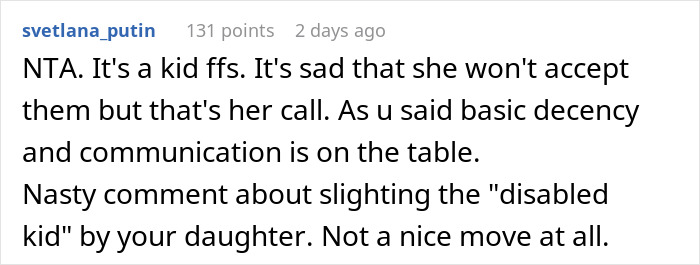Communication is absolutely fundamental to any positive relationship that you hope to build. Without being clear and honest about our thoughts and feelings, we’re leaving others to second-guess our motives. And nobody’s a mind-reader.
Redditor u/Smart_Palpitation147 turned to the AITA community to hear their thoughts about a tense situation at home. The mom shared how she gave her 17-year-old daughter an ultimatum to learn sign language, so that she’d be able to communicate with her 7-year-old stepsister. The post sparked an intense discussion. Scroll down for the full story, and to see how the internet reacted to it.
Bored Panda wanted to understand the context of learning American Sign Language a bit better, so we reached out to the friendly team at Signing Savvy, a popular ASL Sign Language Video Dictionary. Read on to see what a representative told us.
Knowing sign language is a very useful skill to have, no matter where in the world you live

Image credits: YuriArcursPeopleimages (not the actual photo)
A mom started a fiery discussion online after sharing how she gave her an ultimatum to learn sign language for the sake of the teen’s stepsister
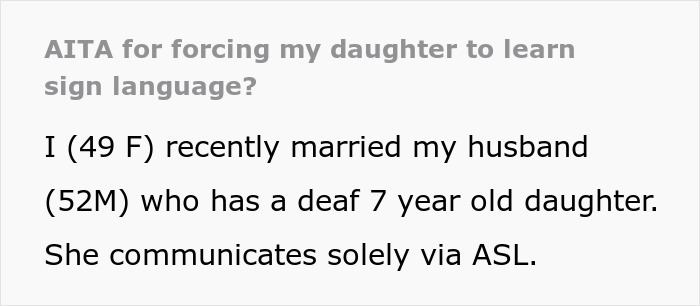
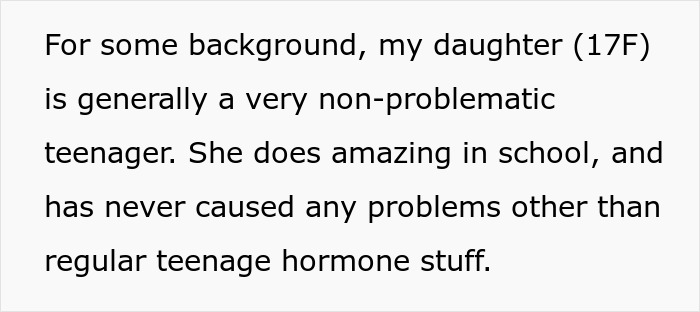


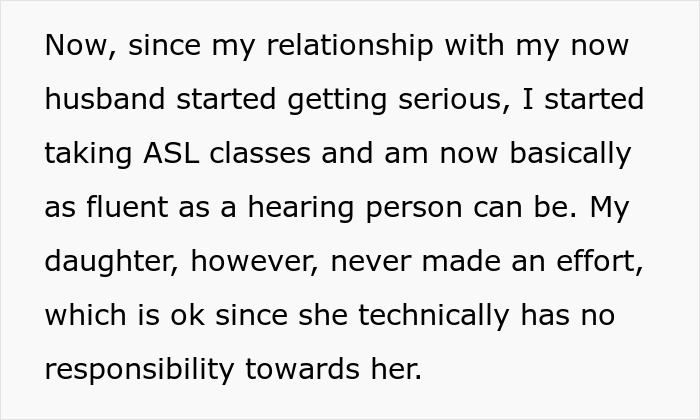
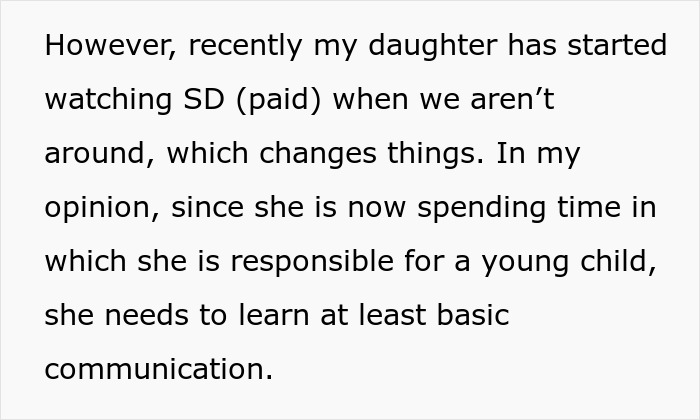

Image credits: EORION_production (not the actual photo)
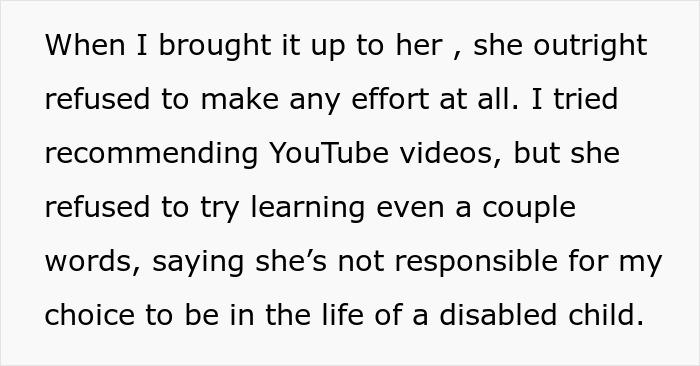

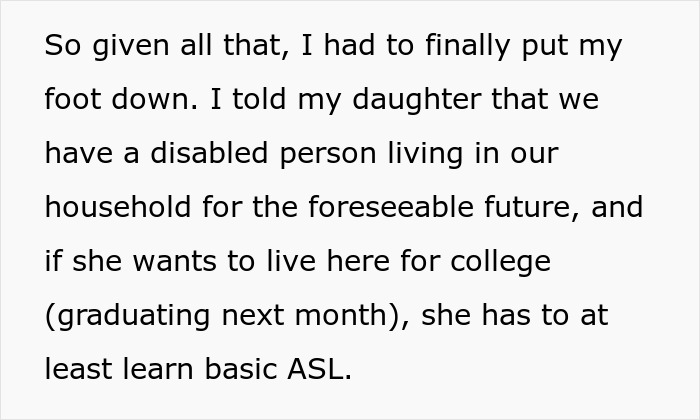
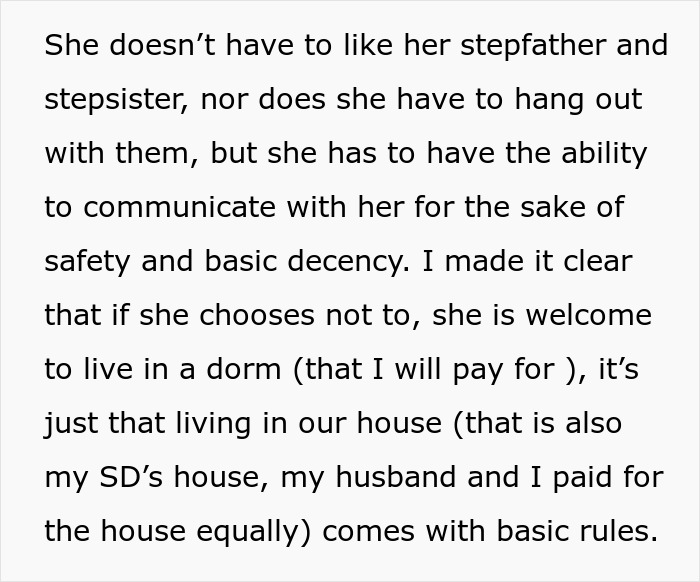

Image credits: Smart_Palpitation147
The argument had escalated to such a point that the mom turned to the internet for advice
The World Federation of the Deaf states that there are over 70 million deaf people around the globe. Meanwhile, the United Nations points out that more than 300 different sign languages exist in the world. The Convention on the Rights of Persons with Disabilities recognizes sign languages as being of equal status as spoken languages.
Most redditors who read the story thought pretty much everyone was to blame for the drama happening at home. Some internet users felt like the OP should not have given her daughter any ultimatums. Meanwhile, the teenager herself should not be misplacing her frustrations on her stepsister and stepdad.
From the mom’s perspective, she’s not asking for rocket science here, only common decency. All she wants is for her soon-to-be eighteen-year-old to learn at least some basic sign language so that she can communicate with her deaf stepsister whenever she’s babysitting her. However, it’s more or less clear that the teen has no interest in getting closer to the new members of her family—at least for now.
A single high-quality lesson may be enough to help someone communicate in ASL on a basic level
Different people learn languages at very different rates. However, we were curious just how difficult it is to learn the basics of American Sign Language. Julie, from Signing Savvy, was kind enough to answer our questions.
“You may communicate on a basic level after just one ‘good’ class,” she told Bored Panda via email. She explained that this means having “the right instructor (preferably Deaf) and the right curriculum (one recognized by the Deaf community).”
“However, to become near-native fluent in ANY language, including sign language, the rule of thumb is generally 6 years.”
Meanwhile, we were interested in whether there’s much overlap between American Sign Language and British Sign Language, considering that each sign language is generally distinct.
“Ironically, even though both the US and Great Britain speak English, the resemblance stops there,” the Signing Savvy team pointed out to us.
“In fact, their signing alphabet is two-handed! So when our native ASL signers were in London, they had to rely on lipreading because the British signs were not even close to ASL,” Julie said.
“ASL and French Sign Language have a lot of similarities because Laurent Clerc (a French Deaf man) and Thomas Gallaudet (an American) opened the first school for the Deaf in Hartford, Connecticut using a combination of FSL along with signs they made up and signs they picked up from deaf students from Martha’s Vineyard.”

Image credits: cottonbro studio (not the actual photo)
Learning a new way to communicate with someone shows that you’re empathetic and respect them
Living in someone else’s home does come with certain rules and expectations. However, the internet wasn’t sure whether being forced to learn sign language fell into that category. Though many seemed to agree that being kind to a vulnerable child should be a no-brainer.
Putting in the effort to learn a completely different mode of communication is also an act of deep empathy and respect. Sign language is a useful skill to have, no matter who you are.
Being able to communicate with as many people as possible is a good goal to strive for. It’s also enjoyable to challenge yourself to learn a new language, whether that’s French, Ukrainian, or ASL.
As with any language, practice is key. Unless you keep your skills sharp with near-daily use, you’re bound to forget what you’ve learned during your lessons. It helps if you’ve got something to motivate you to go above and beyond: like having a deaf relative, classmate, or colleague who you’d like to get to know better.
On the flip side, being forced to learn something may only increase someone’s frustration, if they don’t see the point of it all. Ideally, the person should want to learn sign language, not just feel like they have no choice in the matter. Otherwise, they might become overly defensive.
No universal sign language exists, each country and region has its own
The National Institute on Deafness and Other Communication Disorders notes that there is no universal sign language. At least, not yet. Different countries and regions end up using different sign languages. And so, American Sign Language is a distinct language from, say, British Sign Language.
Though some countries might adopt certain features of ASL, knowing one of these sign languages does not guarantee that a deaf person will understand a deaf foreigner. ASL is also different from English and has its own word order, formations, and pronunciation rules. What’s more, there are regional accents and dialects, alongside individual ways to express oneself.
The NIDCD notes that English speakers might raise the pitch of their voices to ask a question. Meanwhile, ASL users might raise their eyebrows, widen their eyes, or tilt their bodies forward.

Image credits: RDNE Stock project (not the actual photo)
The mom answered some questions and shared a bit more context in the comments of her post



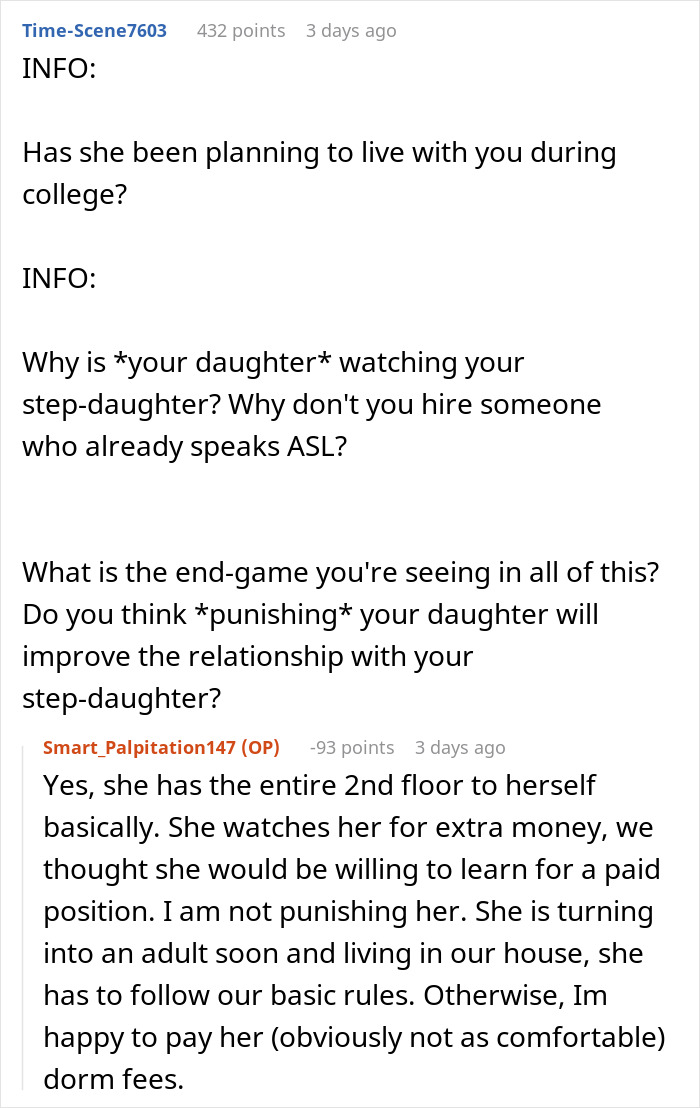
Many people thought that the author was the one in the wrong
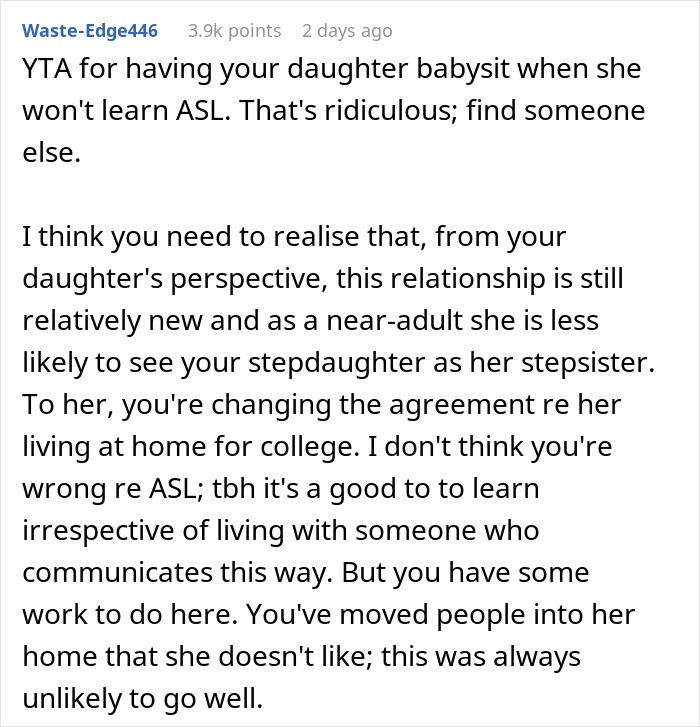
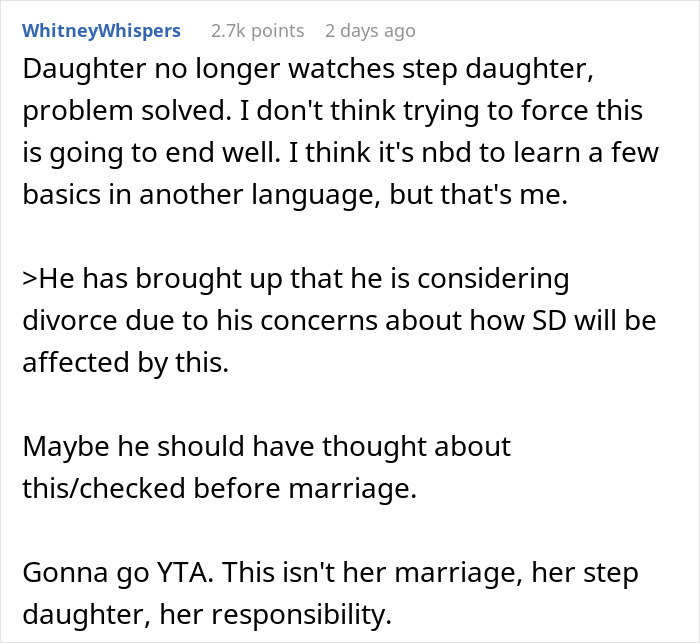
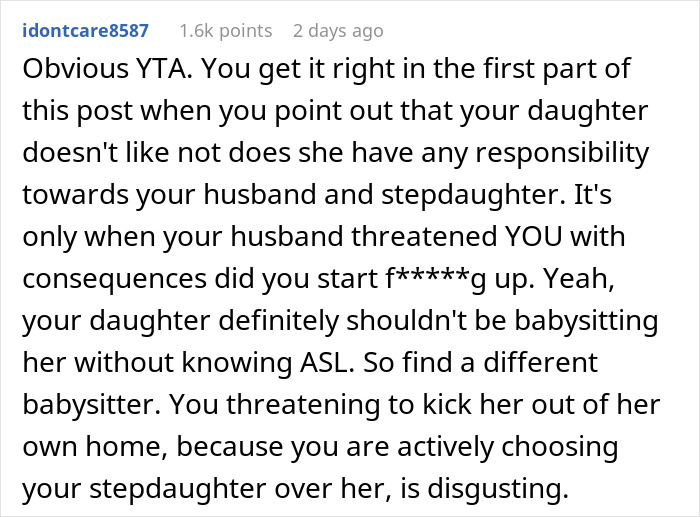
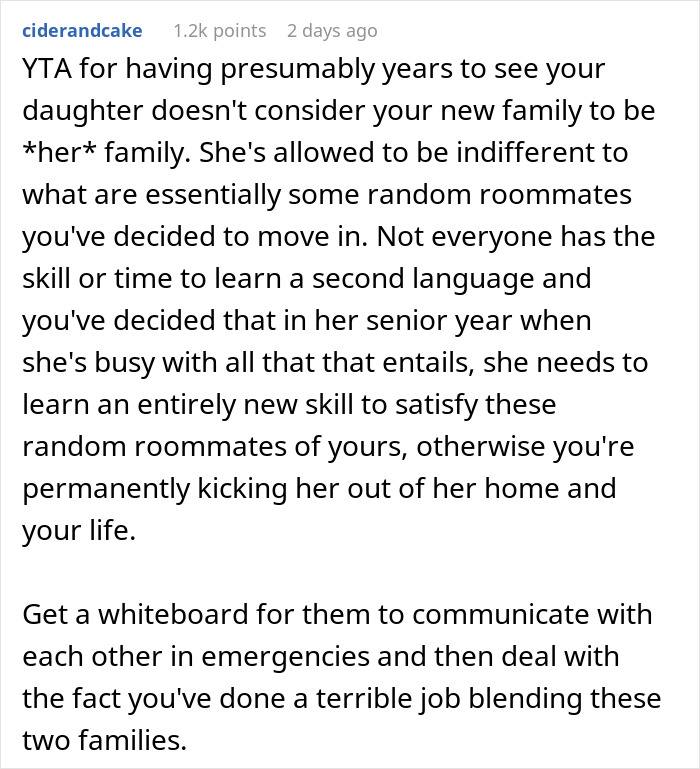
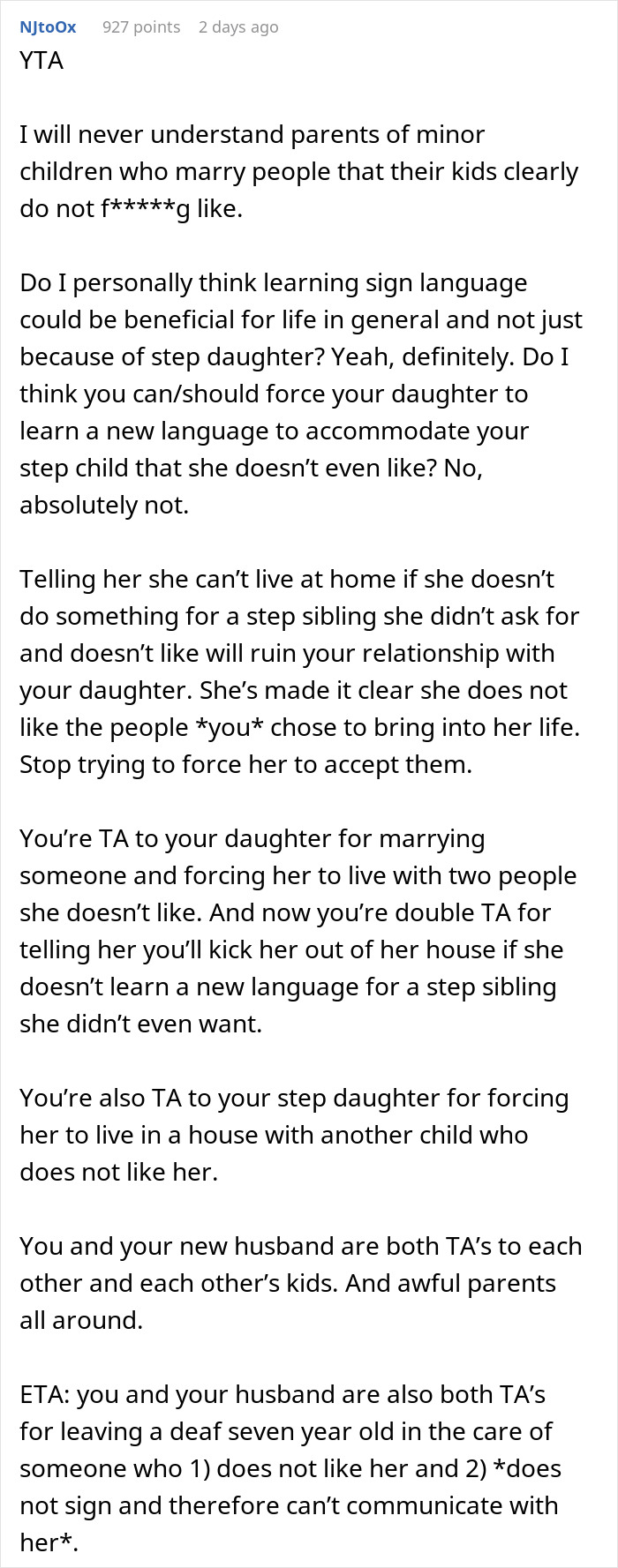
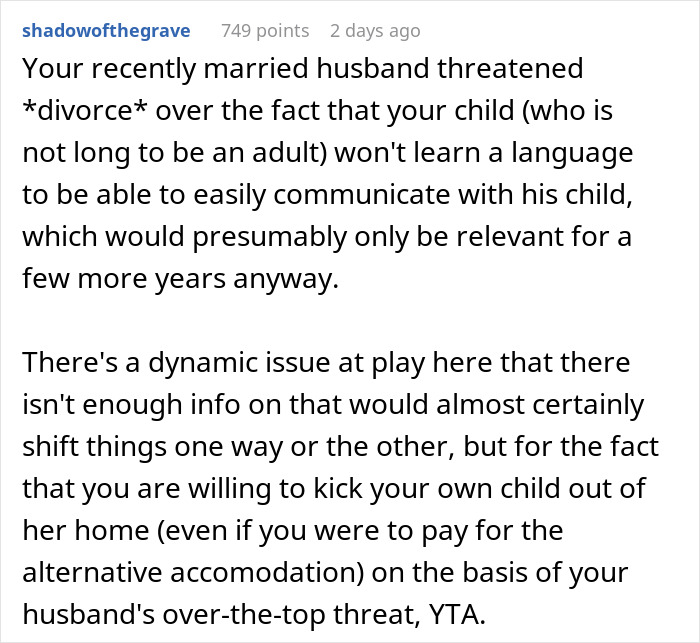

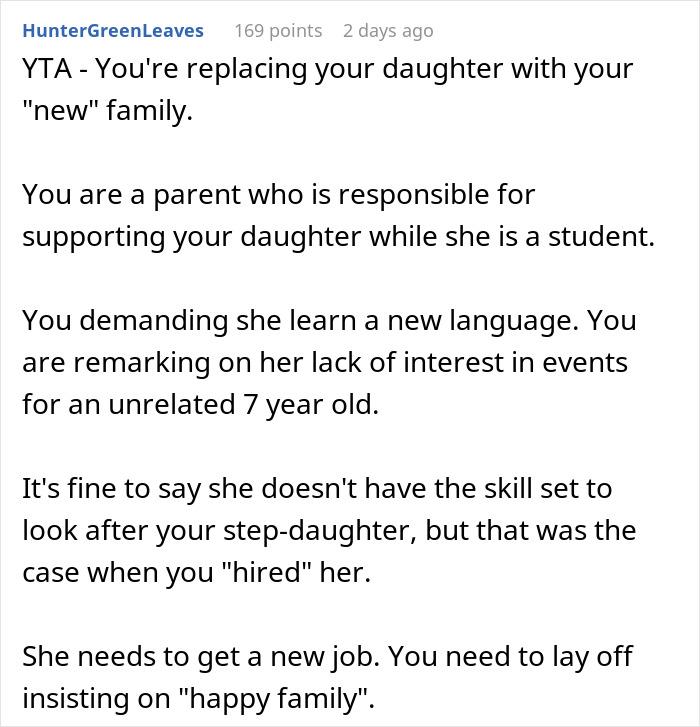

Some others, however, thought that she wasn’t to blame

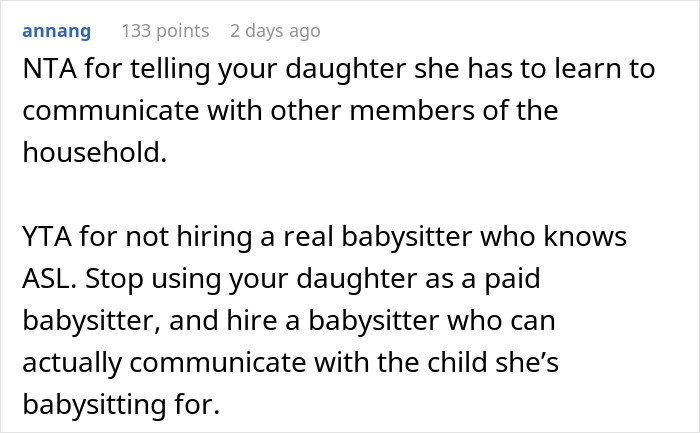
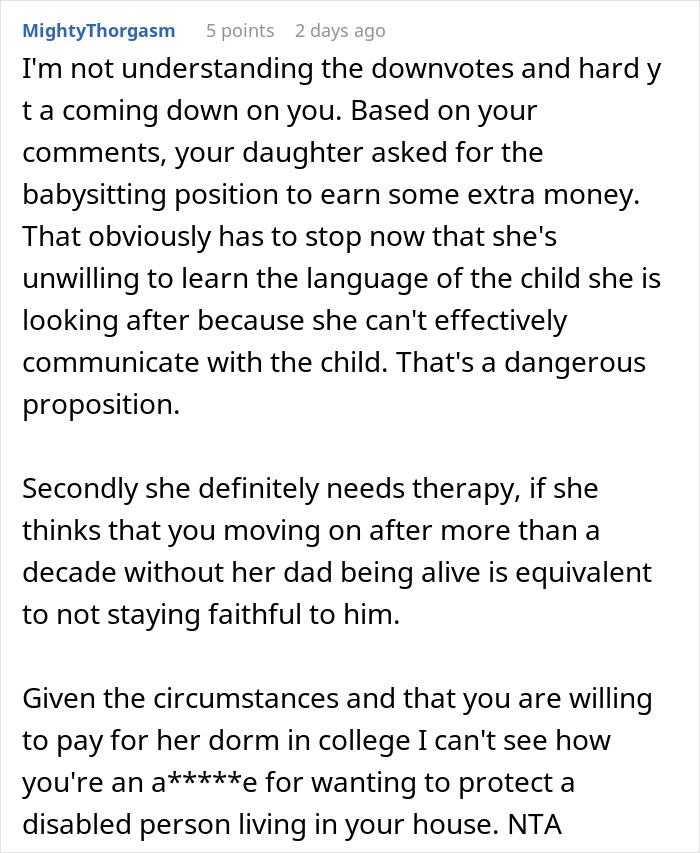
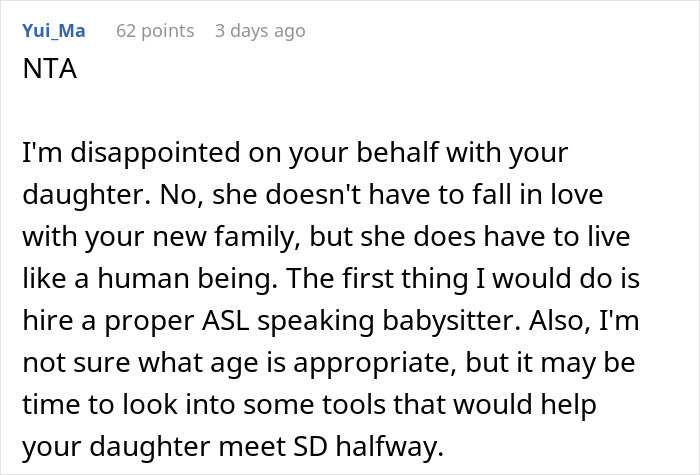
Meanwhile, other readers thought that everyone behaved like a jerk. Here’s what they had to say
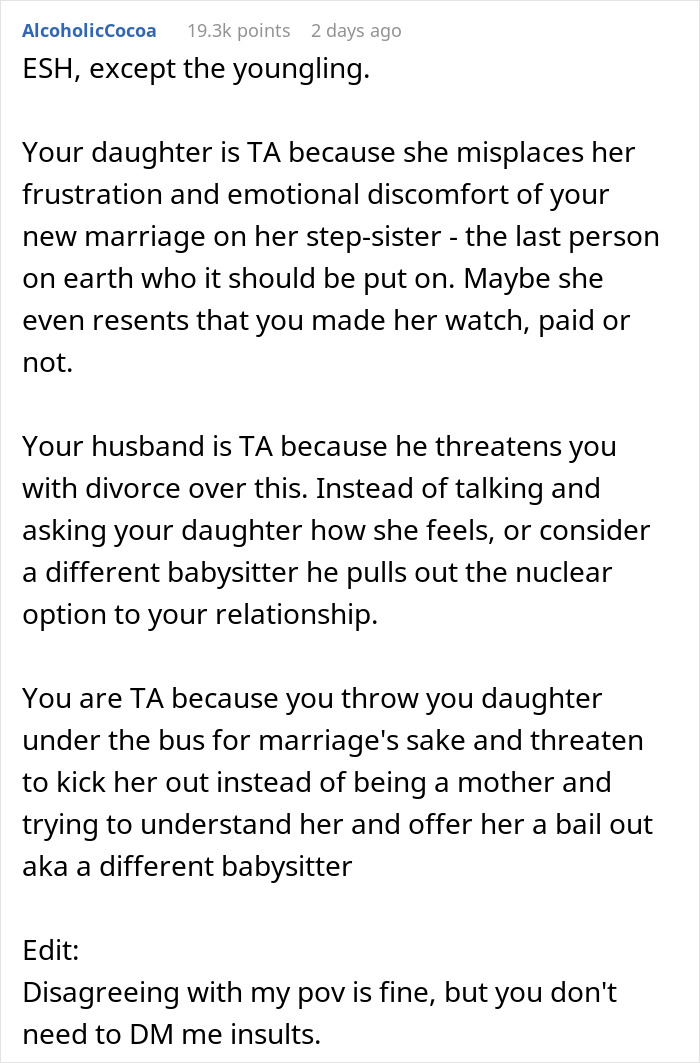

The post “My Daughter Hasn’t Spoken To Me For 7 Days”: Teen Refuses To Learn ASL For Deaf Stepsister, Stepdad Threatens Divorce first appeared on Bored Panda.



